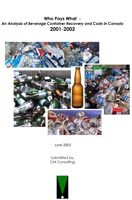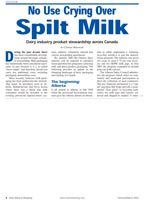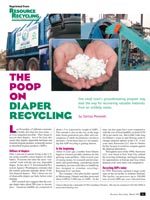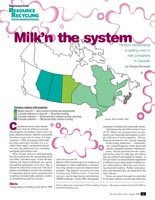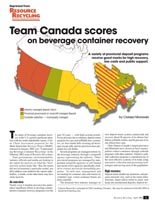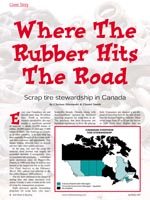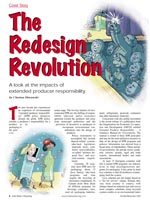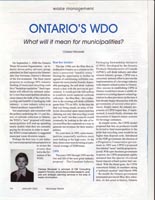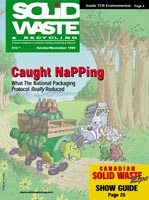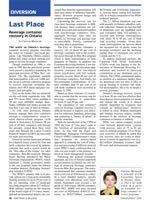An Analysis of Beverage Container Recovery and Costs in Canada 2001-2002. Across Canada, beverage container recovery continues to emerge as a challenging and highly political issue for industry and governments. As the recycling sector has evolved, so too has a range of recovery initiatives, each emphasizing their own strategic value. In assessing these initiatives it’s remarkable […]
Articles and Publications
No Use Crying over Spilt Milk (2003)
Dairy industry product stewardship across Canada During the past decade there has been considerable development around beverage container stewardship. Milk packaging has traditionally been considered sacrosanct in part because it is a so-called “basis staple” and therefore should not carry any additional costs, including packaging stewardship costs. More recently, however, milk packaging has been pulled […]
The Poop on Diaper Recycling (2003)
One small town’s groundbreaking program may lead the way for recovering valuable materials from an unlikely waste. Click to launch full article in PDF Last November, a California community boldly did what few have done — or even imagined possible: They began to recycle their diapers. Just to be clear, this means dirty diapers, disposable […]
Milkin’ the System (2002)
Canadian provinces today operate more than 45 different stewardship programs for products such as tires, oil, paint, pharmaceuticals, batteries, household hazardous waste and, of course, beverage containers. Milk packaging traditionally has been sacrosanct because it is a socalled “basis staple” and therefore should not carry any additional costs, including packaging stewardship costs. More recently, however, […]
Team Canada scores on beverage container recovery (2002)
A variety of provincial deposit programs receive good marks for high recovery, low costs and public support. The status of beverage container recovery in the U.S. gained significant attention with the multi-stakeholder report, A Value Chain Assessment prepared for the Multi-Stakeholder Recovery Project (MSRP), released in January 2002 (see “Understanding Beverage Container Recycling” in the […]
Where the rubber hits the road (2001)
Every year Canadians use and discard more than 28 million tires. From a secondary resource perspective, this represents a significant amount of material — about 210,000 tonnes of rubber, 40,000 tonnes of steel and 15,000 tonnes of fabric. The challenge in Canada, as in other countries, is to turn what has been typically thought of […]
Packaging: The Redesign Revolution (2001)
A look at the impacts of extended producer responsibility The past decade has experienced an explosion of environmental “extended producer responsibility” (EPR) policy initiatives around the globe. EPR policy extends a producer’s responsibility for a product or its packaging to the postconsumer stage. The two key features of environmental EPR are: the shifting of responsibility […]
Ontario’s WDO: what will it mean for municipalities? (2001)
On September l, 2000 the Ontario Waste Diversion Organization — an industry driven policy advisory group, submittedit s final reportto the Honourable Dan Newman, Ontario’s Minister of the Environment. The final report proposes to exchange 50% industry funding of municipal recycling costs for a “backdrop regulation.” Such regulation will effectively entrench industry’s view that municipalities […]
What the National Packaging Protocol Really Reduced (1999)
Caught NaPPing A look at the National Packaging Protocol’s data shows the program failed to reduce post consumer packaging waste. “Celebration is called for!” declared a Canadian packaging newsletter in reference to the National Packaging Protocol’s (NaPP) early success in diverting 51 per cent of packaging waste from disposal by 1996 — four years ahead […]
Last Place — Beverage Container Recovery in Ontario (2000)
This article on Ontario’s beverage container recovery program concludes the series on Canada’s provincial programs. Like Manitoba, Ontario municipalities rely solely on their curbside program to recover beverage containers. Though established in 1986 it was only in 1992 that the provincial government passed a regulation mandating the municipal provision of “Blue Box” collection. The 3Rs […]
